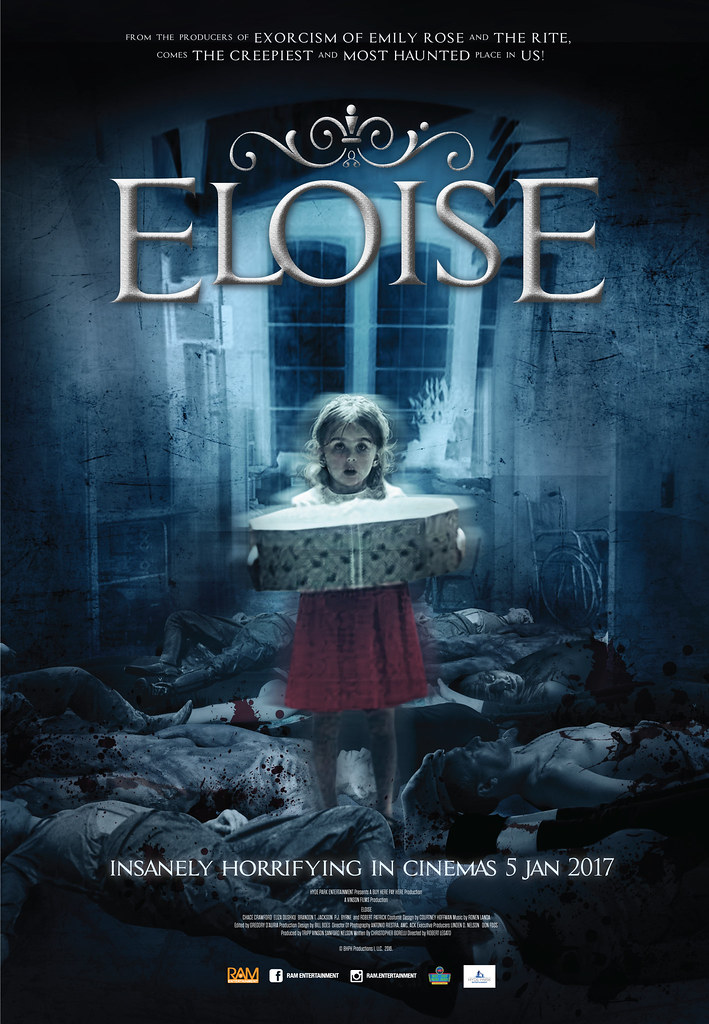The Eloise Insane Asylum was one of the largest institutions of its kind in the entire world. What began as one building in 1832, rapidly grew into a 70+ building campus on 900 acres of land in Westland, Michigan. It truly was a city unto itself. As Eloise grew in size and population, it continued to become more self-sufficient.
Eloise had her own post office, police and fire department, a train station, textile mill, piggery and root cellar, tobacco fields, even its own zip code. One could write a letter to “Eloise, Michigan.†Eloise was widely known and praised for its breakthroughs in medical testing and development of various treatments for the mentally ill. But the lesser known story at the time was that of the patients, the unwanted members of society, committed by family members who were did not understand their ailments and were unable or unwilling to care for them.
Once committed to Eloise, these people became subjects of inhumane testing, as doctors were given free reign to experiment. Rumors of such inhumane testing, along with a constant battle over tax dollars being used to care for the mentally ill population, eventually led to the closure of Eloise by 1982. One hundred and fifty years. Today, three of the original structures still stand, left to complete disrepair. Eloise is considered by many to be one of the most haunted places in the United States, certainly the most haunted in Michigan.
The story of how the making of the “Eloise†movie began starts with Sanford Nelson. Nelson, 23 at the time, first learned of the Eloise Insane Asylum in 2012. At the time, Sanford was working at Michigan Motion Picture Studios, a Film and TV Production facility located in Pontiac, Michigan. Nelson grew up in Michigan, just 30 minutes away from where the asylum was located. Nelson was immediately drawn to the stories he had heard about the asylum, and decided to break away from his day job to pursue the development of a feature film project using Eloise as a backdrop.
After several months of researching, interviewing former staff, as well as current Wayne County employees with knowledge of Eloise’s history, Nelson gathered what he had and set out to find a screen writer. After reading scripts from various writer with experience in the genre,
Nelson hired Christopher Borrelli to develop the story and create a screenplay based on the history of Eloise. Borrelli was drawn to the project due to its long history and authenticity as an actual real place, and upon visiting Michigan and touring the remains of the asylum, Nelson and Borrelli hatched the bones of a story that would eventually become the screenplay for the movie.
After eight months working with Borrelli, Nelson felt the screenplay was strong enough to start pursuing Directors. Nelson was introduced to director Robert Legato and was immediately drawn to his unique skill set as an academy award winning Visual Effects supervisor. Similarly, Legato was drawn to the rich history of Eloise and the many stories told by Nelson, as well as the prospect of actually filming at the real location. The two spent the next few months fine tuning the script, before bringing on veteran Producer Tripp Vinson to continue developing the content of the story and assemble the rest of the team.
Together with Vinson, Nelson raised the financing for the film and began the casting process. Each of the leading actors, Chace Crawford, Eliza Dushku, Brandon T. Jackson, PJ Byrne, and Robert Patrick, were perfect for their roles in the movie. All of the actors seemed to express a similar draw to the project in terms of Eloise being a real place, which seemed to be the common denominator for everyone involved. This was a story that needed to be told! The group was also excited about filming a movie in Detroit, which recently has seen a huge resurgence.
Commencement of principal photography began in May of 2014. Majority of the filming was done at The Masonic Temple of Detroit. The temple was constructed in the same time period as many of the original Eloise buildings, and provided for an amazing filming location for the movie. Many scenes shot at the temple did not even require set dressing, they were in perfect condition and required only some lighting. The Masonic Temple provided a tremendous amount of production value.
The production shot for one week at the actual Eloise Insane Asylum location. The main buildings used for filming were the Power House and the Administration building, as well as the surrounding grounds. It was a very unique experience to be able to film at the real asylum, and leant a real sense of authenticity to the project. As for the place being haunted, the crew definitely felt a “presence†while working on location. One crew member continued to say “I don’t believe in hauntings, but something about this place gives me the creeps!â€
Production wrapped in June of 2014 and the post-production process began. Several foreign territories were sold prior to production and during the post process, with the film finally debuting to buyers at the European Film Market in Berlin in February, 2016. Vertical Entertainment purchased US rights to distribute the film, with plans to release the movie theatrically in 2017. The entire film crew is very proud of the finished movie, and excited to share it with the world.


